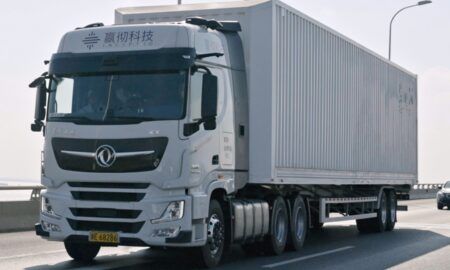Following the US Department of Transportation’s (USDOT) announcement that it has designated the San Diego region of California as one of 10 national proving grounds for autonomous vehicles, the three applicant partners have released some of the details concerning their participation in the program.
The San Diego Association of Governments (SANDAG), the California Department of Transportation (Caltrans), and the City of Chula Vista, jointly submitted the application to the federal government for the designation. The submission highlighted the fact that the San Diego region has many advanced features in its local transportation network, and noted that it has a global reputation as a high-tech hub for research and wireless innovations. The application garnered support from major auto manufacturers and technology companies, including: Toyota, Qualcomm, Teradata, and DENSO International America Inc. As part of the nationwide pilot, proving ground sites will bring together auto makers, cities, public agencies and private companies to test autonomous vehicles on designated facilities. The test sites will share information and work together to develop best practices.
The San Diego region has three distinct proving ground environments:
The I-15 Express Lanes, which runs 20 miles (32km) from SR 163 in San Diego to SR 78 in Escondido. The facility is already a local testbed for modern traffic management technology, and is one of the USDOT’s pilot sites for an Integrated Corridor Management (ICM) system, which allows individual transportation systems to be operated and managed as a unified corridor network. It includes state-of-the-art features, such as a movable barrier in the center median allowing for traffic lanes to be reconfigured, direct access ramps connecting to modern transit stations, new Rapid services, and a dynamic tolling system that allows solo drivers to use excess capacity on the carpool lanes for a fee;
The South Bay Expressway, which is operated by SANDAG, is a 10 mile-long (16km) tolled facility that runs through Eastern Chula Vista and provides access to the USA-Mexico border. The toll road has a number of traffic management assets that make it ideal for autonomous vehicle testing, including closed circuit TVs (CCTV) and a traffic operations center (TOC) that has space for staging equipment;
The City of Chula Vista, which features a typical urban environment with a network of streets and roadways that will facilitate testing of the interaction between vehicles, pedestrians and transit systems.
To ensure the safe testing of autonomous vehicles in the region, two safety officers will be designated to collaborate with the USDOT. Caltrans will have a safety officer assigned to the I-15 Express Lanes and the South Bay Expressway. Chula Vista will have a safety officer assigned for testing on local city streets.
“This is great news for the San Diego region,” said SANDAG chairman and county supervisor Ron Roberts. “We are at the start of a new transportation era, and it’s tremendously exciting for our region to be part of a national initiative to foster innovations and best practices that will enable the safe deployment of driverless vehicles.”




